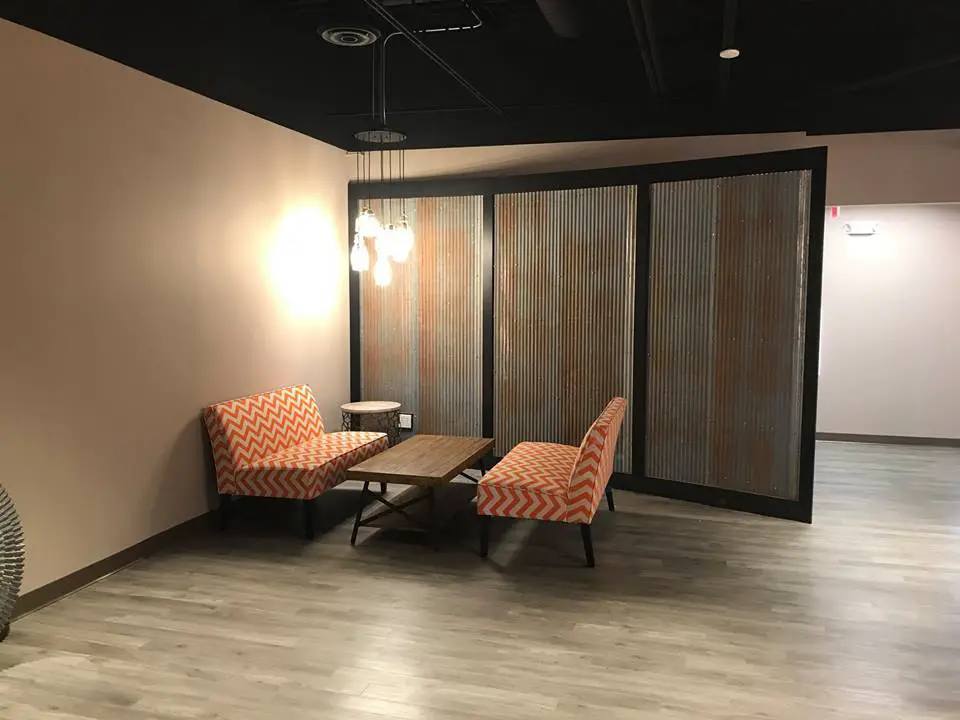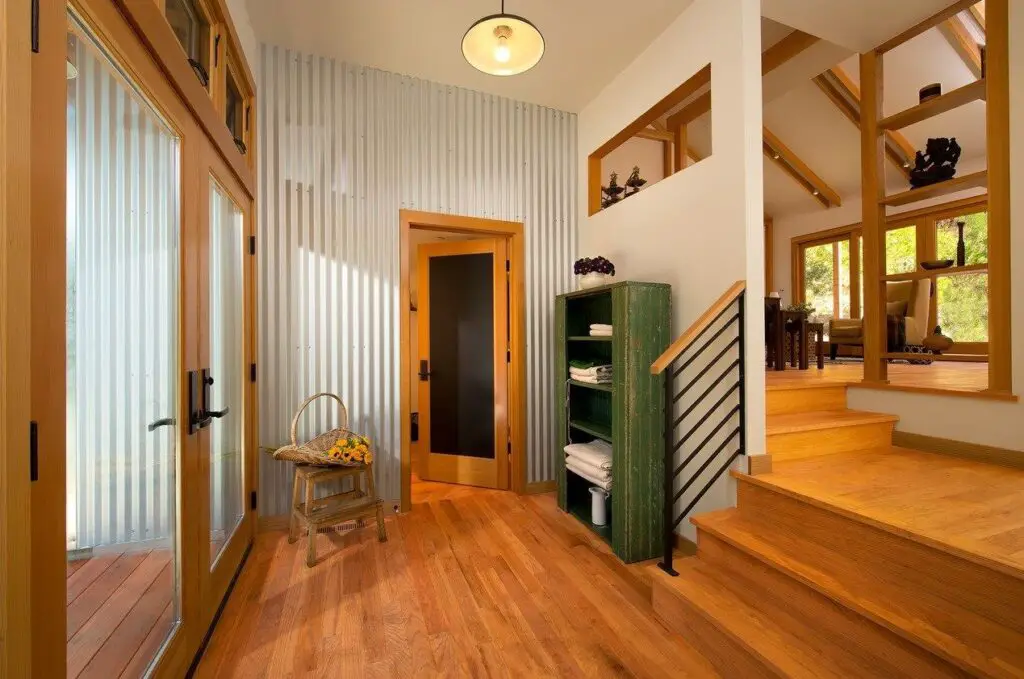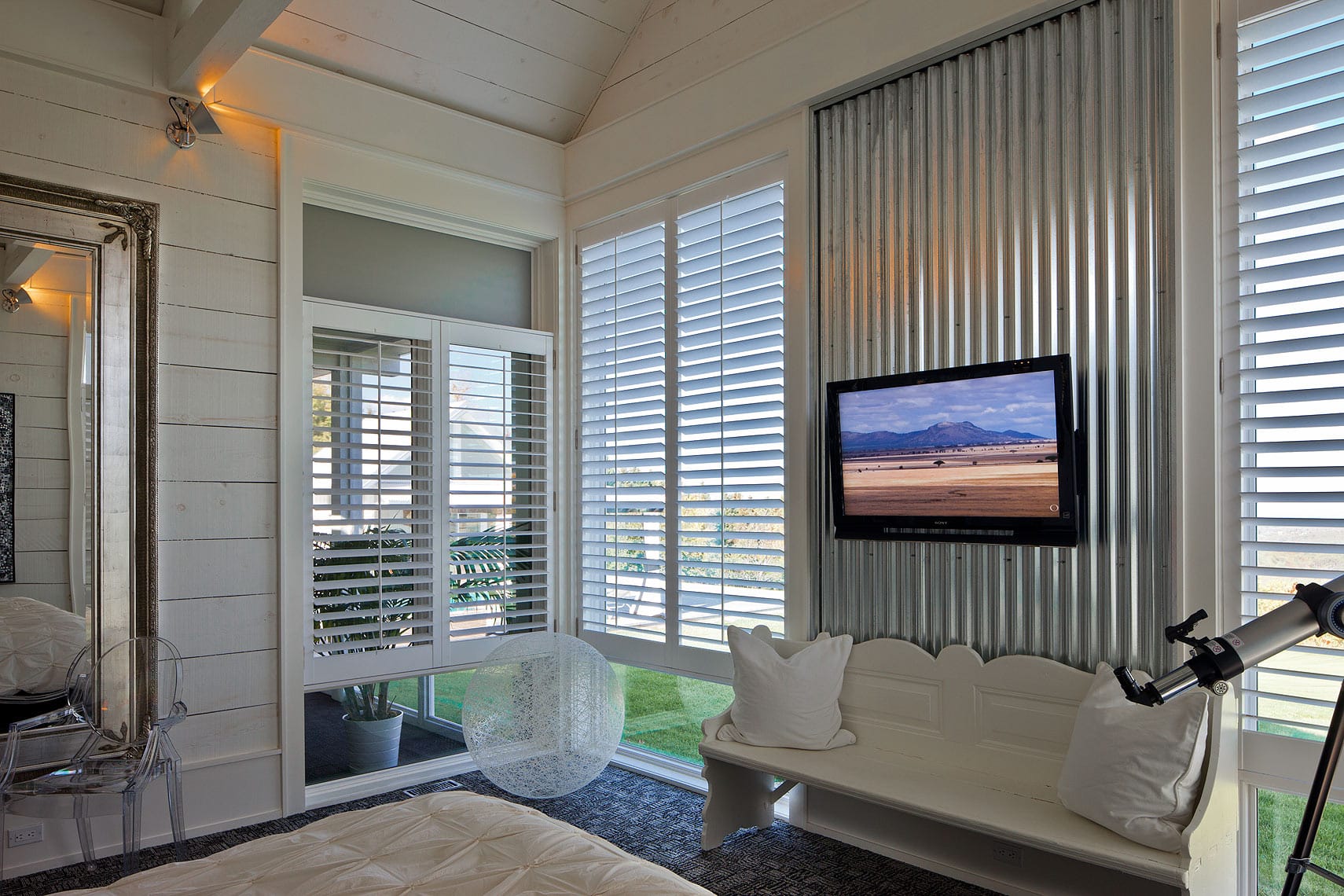How To Install Corrugated Metal On Interior Walls
Introduction
How To Install Corrugated Metal On Interior Walls: A unique and contemporary design solution for interior spaces—installing corrugated metal on interior walls. This innovative approach brings an industrial charm and modern flair to your living or working areas, redefining the conventional aesthetics of indoor design. Whether aiming for an urban loft atmosphere or a rustic ambiance, corrugated metal offers a versatile canvas for artistic expression.
To embark on this creative endeavor, the installation process is both accessible and rewarding. This will walk you through the steps required to transform your interior walls. Beginning with essential preparation—measuring and selecting the appropriate corrugated metal panels—followed by gathering the necessary tools and materials for a seamless installation experience. With safety in mind, guidelines for handling and cutting the metal panels will ensure a smooth process.
Whether you’re an experienced DIY enthusiast or a first-timer, installing corrugated metal on interior walls opens up a realm of design possibilities. Embrace the rugged beauty of industrial aesthetics within your living spaces by following this comprehensive installation guide.

What do you put under corrugated metal roofing?
Roof underlayment adds a protective barrier that acts as a defense system. It is crafted to stay and lay under the metal roof. It also serves as an extra layer to help protect from water, heat, cold, and other weather elements.
Under corrugated metal roofing, it’s crucial to have a proper underlayment to ensure effective protection and optimal performance of the roofing system. It acts as a moisture barrier, preventing water from infiltrating the roof structure. However, it’s worth noting that roofing felt can deteriorate over time due to weather exposure.
On the other hand, synthetic underlayment is a modern alternative that offers several advantages. Synthetic underlayment is also lightweight, making it easier to handle during installation. It typically offers better water resistance and can be more resistant to tearing.
What is corrugated metal used for?
Corrugated metal serves a variety of practical and aesthetic purposes across different industries and applications. Its distinctive ridged design offers both strength and flexibility, making it a versatile material choice.
In construction, corrugated metal is commonly used for roofing and siding on residential, commercial, and industrial buildings. It provides weather-resistant protection and a distinctive look. In agriculture, it’s employed for barns, sheds, and other structures due to its durability and ease of maintenance.
In the industrial sector, corrugated metal’s strength and ability to withstand harsh conditions make it suitable for manufacturing facilities, warehouses, and storage units. Overall, corrugated metal’s combination of durability, weather resistance, and design versatility positions it as a favored material across multiple sectors, contributing to both structural integrity and visual appeal.
What is corrugated metal walls?
The Corrugated metal siding panel features an exposed fastening system. Corrugated steel siding has a wave design that adds rolling texture to any building project and makes them ideal for many marketplaces, including residential, light commercial, agricultural and storage facilities.
Corrugated metal walls are interior or exterior surfaces adorned with sheets of metal that feature a distinct corrugated pattern. This pattern consists of parallel ridges and valleys that provide not only an eye-catching visual appeal but also structural integrity and enhanced durability.
Typically made from materials like steel, aluminum, or even copper, corrugated metal panels are widely recognized for their industrial charm and modern aesthetic. These panels are available in various profiles, allowing for customization in terms of the depth and spacing of the corrugations.
In exterior applications, corrugated metal walls are often used as siding for buildings. They offer protection against the elements while simultaneously adding a dynamic texture to architectural designs. Interior installations are equally popular, where corrugated metal walls introduce a rugged yet sophisticated touch. Such applications are prevalent in residential spaces, commercial establishments, and even creative workspaces, where the metal’s unique texture and reflective qualities contribute to a distinctive ambiance.
Can you use metal for interior walls?
From accent walls to wainscoting, metal panels are finding their way inside the home. Adding metal to the interior of your home is a great way to create a unique, eye-catching look. Metal can protect the interior of your home against damages for years to come, and give any room depth and texture.
Using metal for interior walls is a creative and contemporary design choice that has gained significant popularity in recent years. Metal interior walls can transform spaces, adding a unique aesthetic that ranges from sleek and modern to industrial and rustic.
Metal panels, such as corrugated or flat sheets, can be employed to create captivating focal points or entire accent walls. Their reflective surfaces can play with light, enhancing the sense of space and brightness in a room. Additionally, metal walls can be an efficient solution for areas prone to moisture or high traffic, as they are often resistant to water, scratches, and wear.
What are the key considerations when measuring and selecting corrugated metal panels for interior wall installation?
When measuring and selecting corrugated metal panels for interior wall installation, several crucial factors should be taken into account to ensure a successful and visually pleasing outcome. Firstly, accurate measurements of the wall’s dimensions are essential to determine the quantity and size of panels required. Careful consideration of the panel’s width, length, and corrugation depth is crucial to achieving a balanced and cohesive appearance.
The choice of material plays a vital role. Depending on the design aesthetic and budget, options like galvanized steel, aluminum, or even weathered metals can be selected. Gauge thickness should also be considered, as it influences the panel’s strength and durability.
Equally important is the color and finish of the corrugated metal. This decision should harmonize with the overall interior design scheme. Reflective or matte finishes can drastically alter the visual impact of the panels.
What tools and materials are essential for a successful installation of corrugated metal on interior walls?
Fasteners such as screws or nails, along with a screwdriver or nail gun, are vital for securing the metal panels to the wall. Adhesive options require a caulk gun or adhesive applicator. Safety gear such as gloves and safety goggles protect against sharp edges and metal debris.
Preparation and finishing materials are also crucial. These encompass a chalk line for marking guidelines, a stud finder to locate wall framing for secure attachment, a pencil for marking cut lines, and a level for ensuring panels are aligned correctly. Depending on the desired look, paint or sealant might be needed to protect and enhance the metal’s appearance.
By ensuring you have these essential tools and materials on hand, you can confidently embark on the installation process, promoting efficiency, accuracy, and a polished end result when working with corrugated metal on interior walls.
Can you explain the safety precautions and best practices for handling and cutting corrugated metal panels during the installation process?
Handling and cutting corrugated metal panels during the installation process requires careful adherence to safety precautions and best practices to prevent injuries and ensure a successful outcome. Firstly, wearing appropriate personal protective equipment (PPE) is crucial. Safety goggles protect your eyes from metal shards, while gloves offer hand protection from sharp edges.
When cutting the panels, employ proper tools such as tin snips or a metal shear designed for the task. Ensure the cutting area is well-lit and clear of obstacles, preventing accidents during the process. To avoid distortion, support the panel adequately while cutting and avoid overexerting pressure.
Moreover, maintain a safe distance from the cutting edge to prevent accidental contact with the tool. Clear the workspace of any unnecessary materials to prevent tripping hazards. Dispose of cut metal scraps responsibly, as they can pose safety risks if left scattered.
What are the two primary methods of securing corrugated metal panels to interior walls, and what factors might influence your choice between them?
The two primary methods of securing corrugated metal panels to interior walls are adhesive application and screw-fastening. The choice between these methods depends on various factors, including the desired aesthetic, the wall’s composition, and the level of permanence required.
Adhesive application offers a clean, seamless appearance as the panels are affixed directly to the wall without visible fasteners. This method is suitable for temporary installations or situations where drilling into the wall is not preferable. However, it might not be as durable in high-traffic areas or environments with moisture fluctuations.
Screw-fastening involves attaching the panels to the wall using screws or nails. This method provides a secure and long-lasting attachment, suitable for areas that experience regular wear and tear. It’s especially effective on walls with studs or solid backing. However, screw-fastening leaves visible fastener heads, which can influence the visual outcome.
Factors such as the intended use of the space, the likelihood of future modifications, and the desired level of permanence play a role in determining the optimal method. Balancing the aesthetic appeal, durability, and practicality will guide your decision between adhesive application and screw-fastening when securing corrugated metal panels to interior walls.

Conclusion
The process of installing corrugated metal on interior walls presents an exciting opportunity to reimagine and revitalize your living or working spaces. By following the step-by-step guide outlined above, you can seamlessly integrate this industrial-chic design element into your interior décor.
As you embark on this creative journey, remember that careful planning and precise execution are key. Additionally, embracing safety guidelines when handling and cutting the metal panels ensures both a smooth process and your well-being. The installation techniques discussed offer flexibility, enabling you to choose the method that best suits your space and design vision.
Paying attention to details such as corner treatments and edge finishes elevates the overall aesthetics of the installation. These finer touches contribute to a polished and professional outcome that enhances the visual appeal of your interior walls.
Incorporating corrugated metal into your interior design not only adds a touch of modernity but also opens doors to further customization. From minimalist and sleek to rugged and weathered, the metal’s versatility allows you to express your individual style.








